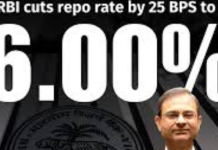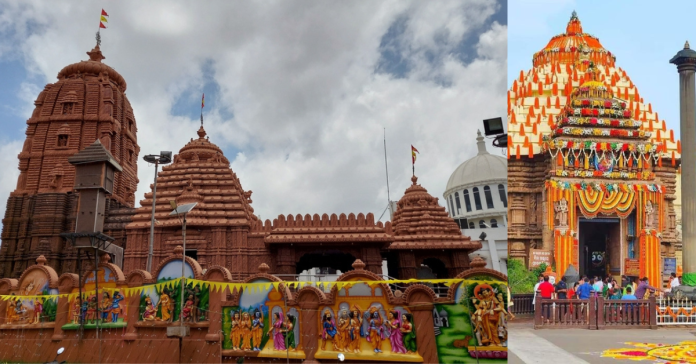Hyderabad lies a haven of serenity – the Jagannath Temple. This magnificent structure, dedicated to Lord Jagannath, the embodiment of the universe, is a cultural and spiritual landmark for devotees across India.Lord Shree Jagannath Temple is a magnificent creation of Kalinga Cultural Trust to provide a sacred place for worship and to arouse divine thoughts in mind and hearts of people. This temple strictly adheres to the principles of sanctity, equity, discipline and cleanliness. The temple is an architectural delight and is a destination to experience peace and tranquility. The temple premise vibrates with the energy of the divine and renders an unique and unforgettable feeling. Enter the precincts of the Majestic Lord Jagannath Temple hyderabad at Road No.12, Banjara Hills, Hyderabad and you will like to visit again and again being drawn closer to the God.

source: Yometro
A Historical Journey:
The story of the Jagannath Temple begins in 1992 when a group of Odia devotees in Hyderabad envisioned a place to celebrate their rich heritage. After years of dedication and perseverance, the temple was finally consecrated in 2009. Inspired by the iconic Jagannath Temple in Puri, Odisha, its architectural style reflects a blend of tradition and modernity. Constructed with red sandstone, the temple boasts a towering Shikhara (spire) that reaches 70 feet, a testament to the skilled craftsmanship involved.
A Celebration of Faith:
The Jagannath Temple is a vibrant center of devotion. Devotees are drawn to the daily pujas (worship rituals) and festivals like Ratha Yatra (Chariot Festival). This annual spectacle, which sees the deities being paraded through the streets on ornately decorated chariots, is a sight to behold. Thousands of devotees participate in this joyous celebration, chanting hymns and seeking blessings.
Why Pray to Lord Jagannath
The Lord who listens and responds to prayers. His kripa and concern are unfathomable.
Lord who rescued the king elephant from the crocodile, saving him by killing the crocodile with the Sudarshan chakra when prayed to be rescued.
He saved the innocent dove from a perilous tangle in the dense forest.
He responded to Draupadi’s distressed cries from the Kuru sabha/darbar, protecting her dignity and saving her from shame.
And also He gave shelter to Vibhishana, Ravana’s brother, and bestowed upon him the throne.
Jagannath is Jagat (the Universe) and Nath (the Lord). That is, Jagannath is the Lord of the Universe, does not belong to any caste, creed, sect, religion, or race. He is beyond space and time and not the Lord of Hindus only but the Lord of Suffering Humanity. He is the remover of sins and the giver of Mukti. and also the purifier of the fallen.
Also read: Chilkur balaji temple
Jagannath temple Hyderabad timings:
| Day | Timing |
|---|---|
| Monday | 6:00 am – 11:00 am 5:00 pm – 9:00 pm |
| Tuesday | 6:00 am – 11:00 am 5:00 pm – 9:00 pm |
| Wedesday | 6:00 am – 11:00 am 5:00 pm – 9:00 pm |
| Thursday | 6:00 am – 11:00 am 5:00 pm – 9:00 pm |
| Friday | 6:00 am – 11:00 am 5:00 pm – 9:00 pm |
| Saturday | 6:00 am – 11:00 am 5:00 pm – 10:00 pm |
| Sunday | 6:00 am – 11:00 am 5:00 pm – 10:00 pm |
How to reach the Temple:
Jagannath Temple Hyderabad Location:
The temple is situated on Road No. 12, Banjara Hills, Hyderabad. It’s close to KBR Park and opposite the Telangana Bhavan.
Reaching the Temple:
- By Car:
- If you’re using a navigation app, simply enter “Jagannath Temple, Hyderabad” as your destination.
- There’s a reasonable amount of free parking available on the temple’s northern and eastern sides.
- By Public Transport:
- Bus: Several buses ply routes near the temple. You can take buses
- Auto-rickshaw or Taxi: These are readily available throughout Hyderabad. You can simply hail one and mention “Jagannath Temple, Banjara Hills” as your destination.
Significant Structure:
SIMHA DWARA:
(Lions Gate or eastern gate) – It is one of the four entrances to the temple and is considered the main entry. It is named so that on either side there are two colossal statues of couching lions with crowns on their head. The gate faces east and therefore is also known as Purva Dwara or the eastern gate. The gate is intricately designed and carved and is of artistic finery and beauty. During Ratha Jatra, the idols of Lord Jagannath, Balabhadra, and Maa Subhadra are taken out to the chariot through this gate. The statue of Lord Mahalaxmi is at the top of the door. The door symbolizes the principle of Dharma and also the majesty of strength through the lion.

source: pinterest
VYAGHRA DWARA: The Western door (Tiger gate) is guarded by two statues of tigers and is also known as Paschima dwara or Vyaghra dwara. It symbolizes Moksha and Vairagya (Renunciation) and energy by different schools of believers.
HATHI DWARA: The northern door, the Hathi Dwara or Uttara Dwara, is also symbolically indicated in this temple in view of the constraint of access to the temple from the northern side. This gate represents artha or prosperity different believers.
ASWA DWARA:
The southern gate is guarded by two statues of horses. This Aswa dwara symbolically represents Kama or Gyana (Knowledge) or military powers.
Navagraha statues are placed on all the gates in addition to small images of Shiva, Vishnu, Hanuman, Durga, and Narasimha.

source: puriwaves
ARUNA STAMBHA: The pillar is named after Aruna, the charioteer of the Sun God. In Puri, it is a sixteen-sided pillar (Height 25′ 2”, circumference 6′ 3.5″) with Aruna in prayer mode. An elegant and master piece of art, it is placed before the temple as the Sun God is considered identical with Vishnu from Vedic times. An Aruna stamba cladded with carved and designed brass plates adorns the Jagannath Temple at Hyderabad. Artistic and imposing, it stands tall at 20 feet.

BAISI PAHACHA
(Twenty-two steps): After entering the temple premises from the eastern gate, one needs to climb 22 steps to proceed towards the sanctum sanctorum of Lord Jagannath. In Puri temple, each of these steps is 70ft in length, 6ft in width, and 6 to 7 inches in height. Here the steps are symbolic and do not conform to this measurement. The steps are given a lot of divine significance and considered auspicious for numerous holy activities. It is believed that during the car festival, several Gods, Goddesses, demigods, heavenly entities, souls of ancestors, Chitragupta, and Yamadootas descend upon these steps to witness the Pahandi of Lord Jagannath during the Ratha Jatra/Car festival.
BASI PANCHA significance
Madan Mohan, the representative idol of Lord Jagannath, offers pindadana on these steps to His ancestors—Nanda and Yashoda, Devaki and Vasudeva, Koushalya and Dasaratha on chaturdashi theethi of the dark fortnight in the month of Margasira. He also offers pindadana to King Indradyumna, who built the temple, and Queen Gundicha since they were childless. The steps are also called steps of self-control as these steps represent 22 kinds of faults and weaknesses in human beings.
Put a speck of dust from the surface of these steps on your forehead, and you get a sense of fulfillment, and all your sins will disappear.
Children are made to roll down on the steps to bring them spiritual bliss and happiness. Each of these sacred steps is named differently as: 1) Tidva, 2) Kumundati, 3) Manda, 4) Chalobati, 5) Dayabati, 6) Rajani, 7) Ratika, 8) Raohi, 9) Krodha, 10) Bajrika, 11) Prasavani, 12) Priti, 13) Marjana, 14) Khati, 15) Rakta, 16) Sandhipani, 17) Alapani, 18) Mandanti, 19) Rohini, 20) Gamya, 21) Ugra, 22) Khorini.
Crossing the 22 steps means crossing the 22 shortcomings to see the Lord. The shortcomings (Para Prakriti) are Kama, Sambhoga, Keli, Lova, Sancaya, Kosa or Panjikarana, Abhamaya, Himsa, Ersa, Kisunata, Kapata, Mithya, Hhuna, Ninda, Ajanta, Krodha, Raga, Dvesa, Ahankar, Mada or Parba, Uthkantha, Maithuna.
It is also believed that Baikuntha, the abode of Lord Vishnu, is situated above saptaloka, sapta patala, and asta baikuntha (22 stages); one has to cross them to reach the Lord. Thus, the steps in the temple take the devotees to the sanctum to have his Darshan. The Hyderabad temple also has 22 steps leading to Garuda Stamba and to the sanctum thereafter, though not of the same specification as that of Puri Temple.
Must know: Swarnagiri temple
GARUDA STAMBHA:
A cosmic column which joins heaven and earth, Garuda is a vehicle of Lord Vishnu. Garuda is ever ready to serve the Lord with exemplary devotion and extraordinary power. Garuda is constantly watching the Lord on the Ratnavedi. Garuda Deva is installed on the column made out of wood and cladded with intricately woven brass at the entrance of Nata Mandir. The devotees, before proceeding towards the sanctum, touch and go into extraordinary devotion and a state of surrender to the Lord. A mere touch is assuring and arouses a cosmic connection with the devotee. Garuda Stambha is of the same importance as Nandi in Shiva temple.
NILA CHAKRA:
The Neela chakra or the Blue Wheel adorns the top of the temple. The wheel symbolizes the Sudarshan Chakra, the most powerful disc weapon of Lord Vishnu. The wheel is made out of alloys of eight metals consisting of iron, copper, zinc, mercury, lead, brass, silver, and gold. The Neela chakra in Puri temple weighs 2200 Kgs and has a height of 11 ft 8 inches with a diameter of 7 ft 6 inches. There are 8 wheel bars in the chakra.
The Neela chakra has eight Navagunjaras carved in the outer circumference all facing towards the flag post above. The Neela chakra in this temple is much similar but small in size and about 2’X3′ in width and height and weighs about 100 Kgs. A flag is flown tied to the mast attached to the Nilachakra. It is a pious and holy act to offer the flags to the temple.
The flags usually are in deep red or yellow in color with a crescent moon and a sun in white-colored cloth in the center of the flag. The flag-changing ceremony is a breathtaking exercise and a great attraction for the devotees.
Daily rituals in the Temple (Niti and Dhupas)
Morning (Sakala Dhupa):
- Dwarapitha: The day begins with the opening of the temple doors and the sanctum sanctorum.
- Mangala Arati: The first lamp offering to awaken the deities.
- Mailam: Removal of the previous night’s dress and offerings from the deities.
- Abakash: Ritualistic cleaning and bathing of the deities.
- Besha Mailam: Dressing the deities in fresh clothes.
- Sahan Mela: A brief public viewing of the deities in the sanctum sanctorum.
- Besha Ulagi: Changing the deities’ clothes again.
- Rosa Homa: Offering of oblations to the fire.
- Surya Puja & Dwarapala Puja: Worship rituals dedicated to the Sun God and the guardian deities of the temple doors.
- Gopala Ballav Bhoga: Breakfast offering to the deities.
- Sakala Dhupa: The main morning food offering, consisting of various vegetarian preparations like black gram (kanti, enduri, etc.), rice, curries, sweets, etc. This offering is performed with 16 “upacharas” (ritualistic steps).
Midday (Madhyana Dhupa):
- Similar rituals as the morning, including Mailam, Besha, and offering of a more elaborate midday meal (Madhyana Dhupa) with a wider variety of dishes.
Afternoon (Madhyan Pahuda):
- Sandhya Arati: Evening lamp offering to the deities. (This might occur before Madhyan Dhupa if there’s no Madhyan Pahuda)
- Madhyan Pahuda: A period of midday rest for the deities. (This might be skipped depending on the temple schedule)
Evening (Sandhya Dhupa):
- Similar rituals as the morning, including Mailam, Besha, and offering of an evening meal (Sandhya Dhupa).
- Chandana Lagi: Applying sandalwood paste to the deities.
- Badasinghara Besa: Dressing the deities in special attire for the night.
- Badasinghara Dhupa: A final food offering before the deities retire for the night.
- Khatasejulagi and Pahuda: Putting the deities to sleep in their designated chamber for the night.
Types of Prasad:
- Mahaprasad: This is the main Prasad offered to Lord Jagannath and then distributed to devotees. It consists of a variety of vegetarian dishes, including:
- Rice preparations: Khechudi (sweet rice dish), Kanji (sour rice dish), Pukhala (rice cooked with vegetables) etc.
- Dal: Mixed lentils cooked with spices
- Sabzi (Vegetable Curries): A variety of seasonal vegetables cooked in different styles
- Sweets: Gaja (flattened rice cake with jaggery), Peda (sweet milk balls), Laddu (sweet balls made with flour and sugar) etc.
- Sukhilla Prasad: These are dry offerings that devotees can purchase directly from the temple counter. They include:
- Khaja: A crispy sweet pastry made with flour and ghee
- Gaja: As mentioned above
- Laddu: As mentioned above
Distribution of Prasad:
- Free Prasad: A limited quantity of Mahaprasad is distributed to devotees free of cost after morning and evening Aaratis (lamp offerings).
- Paid Prasad: Devotees can purchase Sukhila Prasad from the temple counter. The cost is nominal.
| Puja Name | Description | Approximate Cost (INR) |
|---|---|---|
| Abhishekam | A sacred bath for the deities with various auspicious substances like milk, curd, honey, etc. | ₹500 – ₹2000 |
| Archana | Offering prayers and chanting mantras specific to a particular deity. | ₹100 – ₹500 |
| Laghu Rudrabhishekham (Shiva Puja) | A simplified version of the Rudrabhishekham puja for Lord Shiva. | ₹300 – ₹1000 |
| Satyanarayan Puja | A puja dedicated to Lord Vishnu for blessings of peace, prosperity, and well-being. | ₹500 – ₹1500 |
| Griha Shanti Puja | A puja performed for peace and harmony in the household. | ₹1000 – ₹3000 |
| Vishnu Sahasranama Archana | Chanting of the thousand names of Lord Vishnu. | ₹200 – ₹500 |
| Special Pujas (Birthday Pujas, Marriage Anniversary Pujas) | Pujas performed on specific occasions like birthdays or wedding anniversaries. | ₹1000 – ₹5000 (depending on the complexity) |
Some pujas may require booking in advance, especially during peak seasons or festival
The temple might offer a wider variety of pujas on request. It’s recommended to inquire with the temple administration for a complete list.
Frequently Asked Questions:
The temple is situated on Road No. 12, Banjara Hills, Hyderabad. It’s close to KBR Park and opposite the Telangana Bhavan.
JAGANNATH” (Lord of the Universe i.e. Lord Krishna) along with siblings Lord Bala Bhadra & Devi Subhadra and Five other deities including Lord Hanuman and Lord Ganesha are also present
The Jagannath Temple in Hyderabad holds a special place for several reasons, blending tradition with modernity Replica of Puri Temple: Inspired by the iconic Jagannath Temple in Puri, Odisha, Annual Ratha Yatra, Following similar rituals and daily pujas as the Puri temple, uilt by the Odia community in Hyderabad etc
you can visit the temple from Monda to Sunday between 6.00 AM to 9.00Pm
Suggested Articles:
Yadadri Temple (Lakshmi Narasimha Swamy): Timings, Seva’s & history Guide 2024
Swarnagiri Temple, Bhuvanagiri: Must-Know Facts on Temple
Anantha PadmanabhaSwamy Temple Telangana: History Timings and Location































